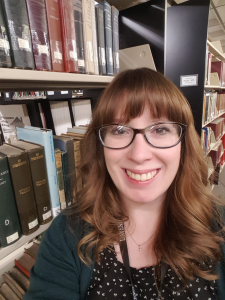by Angela Tillapaugh
The Frick Collection, located in New York City, is an art museum that houses paintings primarily by the Old Masters, as well as sculptures and decorative
arts. While the Frick’s original building, Henry Clay Frick’s Beaux …

Featuring profiles of outreach & advocacy in cultural heritage
by Angela Tillapaugh
The Frick Collection, located in New York City, is an art museum that houses paintings primarily by the Old Masters, as well as sculptures and decorative
arts. While the Frick’s original building, Henry Clay Frick’s Beaux …
by Amanda Miano
Kathryn Kuntz always knew she wanted to work in history, but she did not feel  suited to K-12 education which was the primary path for those attending Black Hills State University. People would ask her, “Well, what …
suited to K-12 education which was the primary path for those attending Black Hills State University. People would ask her, “Well, what …
by Gretta Cox-Gorton
What’s a public library to do when a global pandemic shutters its doors? While some of us were making banana bread, researching mutual aid, and figuring out how to get our eager hands on recent bestsellers, our …
by Kai Uchida
One of the most prominent community archives in Asian America is Densho. Translating as “to pass on,” it is an organization that is dedicated to providing resources and archival material related to the World War II Incarceration …
by Ashley Perry
On October 21, 1775 the Taunton chapter of the Sons of Liberty created what came to be known as the Liberty and Union flag — a banner of red cloth with “Liberty and Union” stitched boldly upon …
by Jack Oldham
The project I chose to profile is the “The State of Utah vs Joe Hill,” which was created by the Utah Division of Archives and Records Service. This is an active project that looks to tell the …
by Kelly Strickland
The Eye on Houston: High School Documentary Photography project calls for students from Houston public high schools to submit photographs for display at the Museum of Fine Arts Houston (MFAH). The project prompts students to photograph the …
by Emily Moran
In the Spring of each year, members of the Geechee Kunda community come together for The Gathering, a celebration of Gullah Geechee heritage and culture. The Gathering, like many of their other annual events, is a day-long …
by Julianna Head
The Stonewall National Museum and Archives (SNMA) is located in Fort Lauderdale, Florida. Founded by Mark Silber in 1972, the SNMA is dedicated to LGBT+ history, civil rights, arts, and culture. The museum features three gallery spaces …
by Kai Uchida
Project Website: https://web.stanford.edu/group/chineserailroad/cgi-bin/website/
Digital Materials Repository: https://exhibits.stanford.edu/crrw/browse
Organized in 2012 by Gordon H. Chang and Shelly Fisher Fishkin, The Chinese Railroad Workers in North America Project is a project organized by scholars at Stanford University and …